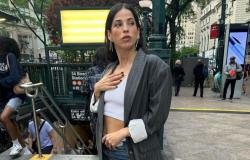A scottish gallery offers art lovers and artists the opportunity to participate in a dynamic and constantly evolving exhibition. This unique exhibition invites anyone who wishes to hang their works on the walls of the space, move them or even remove them. Until June 30th, Castle Millsof the Edinburgh engraversunder the motto “Castle Mills: Before & Now: whose gallery is it?”, allows visitors to play the role of artists and curators at the same time. Visitors are free to add their own pieces to the main exhibition space, rearrange existing works, or remove them from the show.
This initiative is different from others because the gallery staff is available to assist participants in placing the works on the walls, providing advice and information on the art of healing. By breaking traditional exhibition norms, the project seeks to demystify the process and make it accessible to all.
The open call extends to all forms of artistic expression, ranging from printmaking to textiles and even performances. The success of this proposal has been such that the gallery has had to limit the number of pieces that each person can exhibit, restricting participation to one large work or two smaller pieces per individual.
One of the exhibitors, Molly McLean, expressed his excitement and gratitude for the opportunity, highlighting that the exhibition is helping emerging artists overcome traditional barriers to displaying their work. “I’ve never seen an exhibit like this,” McLean said. “This has been a really valuable experience for me.”
Agita Makevica, another participant, took advantage of the occasion to present a series of portraits made with mixed techniques. “I was really attracted to the open concept,” Makevica said. “It gave me a valuable opportunity to share my work publicly. This is my first experience of exhibiting my work in Scotland. “It has been very exciting to be one of the many people participating in this exhibition.”
The Castle Mills initiative evokes the historical roots of Edinburgh Printmakers as a membership organization and as the first open access print studio in Britain. The space is located in the historic Grade C listed Castle Mills building, which once housed thousands of local workers as it was the headquarters of the British Rubber Company.
Under the care of Edinburgh Printmakers, the iconic venue has hosted works by renowned artists, including pop art pioneer the late Eduardo Paolozziand Scottish multimedia artist Rachel McLean. This quiet corner of Edinburgh has seen a rich artistic history and now, thanks to initiatives like this, continues to be a dynamic and inclusive space for contemporary creativity.
The Castle Mills: Then & Now project is supported by the National Lottery Heritage Fund and seeks to promote conversation about art and curation, while at the same time giving a sense of ownership of the space to the local community. According to Ilaria Casinihead of heritage engagement, “as the public continually modifies the exhibition, it will never remain exactly the same, prompting reflection on printmaking and the visual arts that goes beyond the selection of a single curator.”
Casini adds that they are “enjoying the conversations, the artistic discoveries, and the celebration of creativity that continues to change every day.”
The project opened doors to new artists and also created an ongoing dialogue between the gallery and its community. Community groups, local schools and individuals are all represented in this exhibition. This inclusive approach not only diversifies the type of art on display, but also brings a variety of perspectives and voices to the space.
Furthermore, artistic interventions are not limited to just traditional works of art; some presentations include interactive aspects and live performances and They provide visitors with a complete and immersive experience. In this scenario, each visit becomes a unique experience, since the exhibition is constantly evolving due to the interaction and contributions of visitors.
Accessibility and inclusion appear to be the pillars of this innovative initiative and allow people of all ages, abilities and backgrounds to actively participate in the art world. This not only enriches the local arts scene, but also provides an invaluable platform for new talent to showcase their work and develop their curatorial skills.






